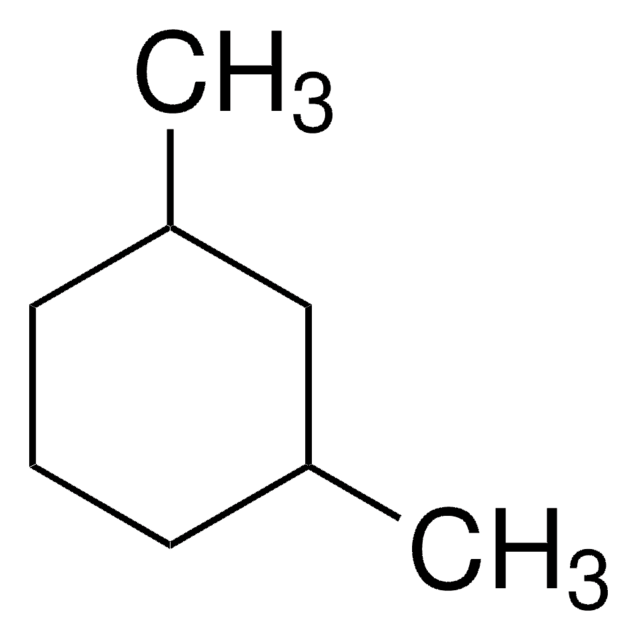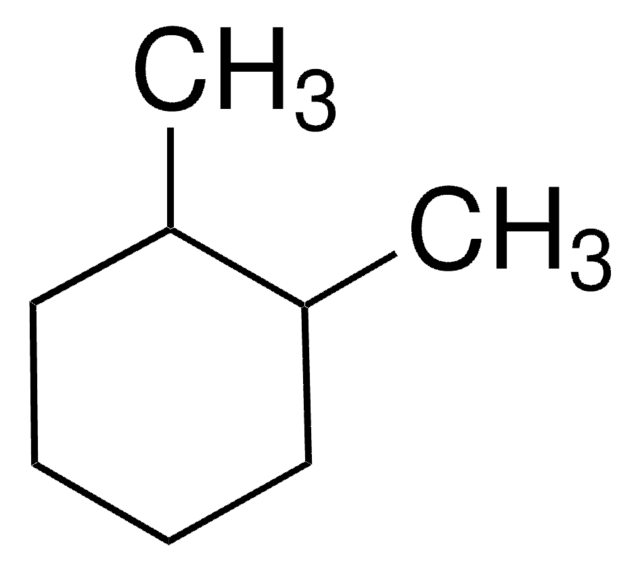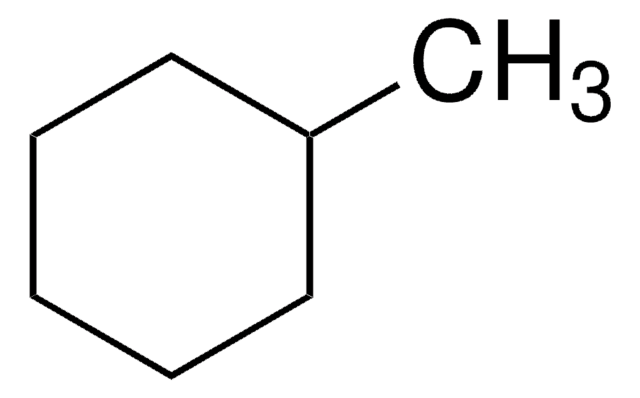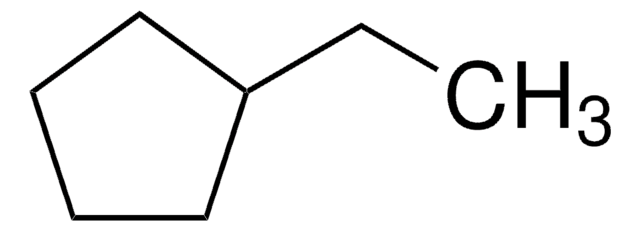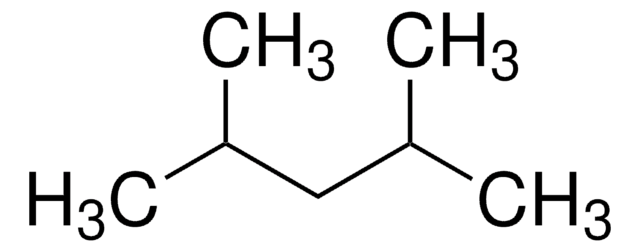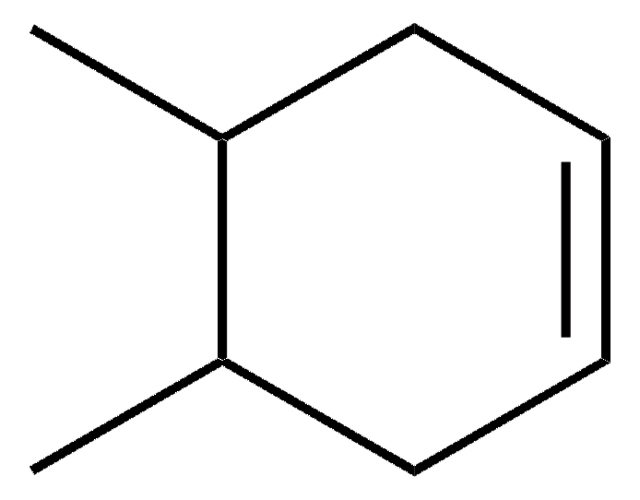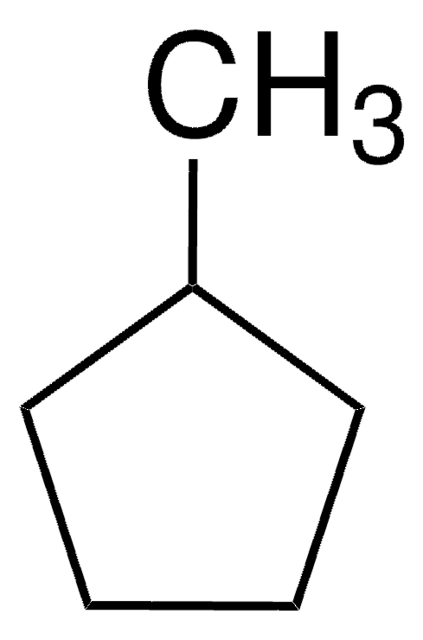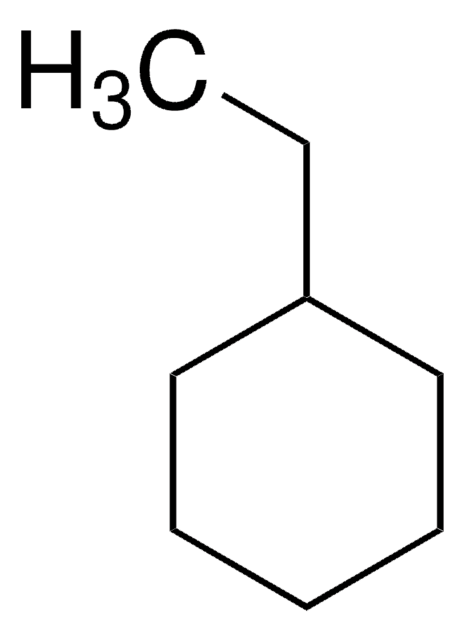40000
trans-1,4-Dimethylcyclohexane
≥98.0% (GC)
Synonym(s):
trans-Hexahydro-p-xylene
About This Item
Recommended Products
Assay
≥98.0% (GC)
form
liquid
refractive index
n20/D 1.421
bp
117-119 °C
solubility
water: soluble
density
0.761 g/mL at 20 °C (lit.)
SMILES string
C[C@H]1CC[C@H](C)CC1
InChI
1S/C8H16/c1-7-3-5-8(2)6-4-7/h7-8H,3-6H2,1-2H3/t7-,8-
InChI key
QRMPKOFEUHIBNM-ZKCHVHJHSA-N
Looking for similar products? Visit Product Comparison Guide
General description
Application
Signal Word
Danger
Hazard Statements
Precautionary Statements
Hazard Classifications
Acute Tox. 4 Oral - Flam. Liq. 2
Storage Class Code
3 - Flammable liquids
WGK
WGK 3
Flash Point(F)
42.8 °F - closed cup
Flash Point(C)
6 °C - closed cup
Personal Protective Equipment
Regulatory Information
Choose from one of the most recent versions:
Certificates of Analysis (COA)
Don't see the Right Version?
If you require a particular version, you can look up a specific certificate by the Lot or Batch number.
Already Own This Product?
Find documentation for the products that you have recently purchased in the Document Library.
Our team of scientists has experience in all areas of research including Life Science, Material Science, Chemical Synthesis, Chromatography, Analytical and many others.
Contact Technical Service